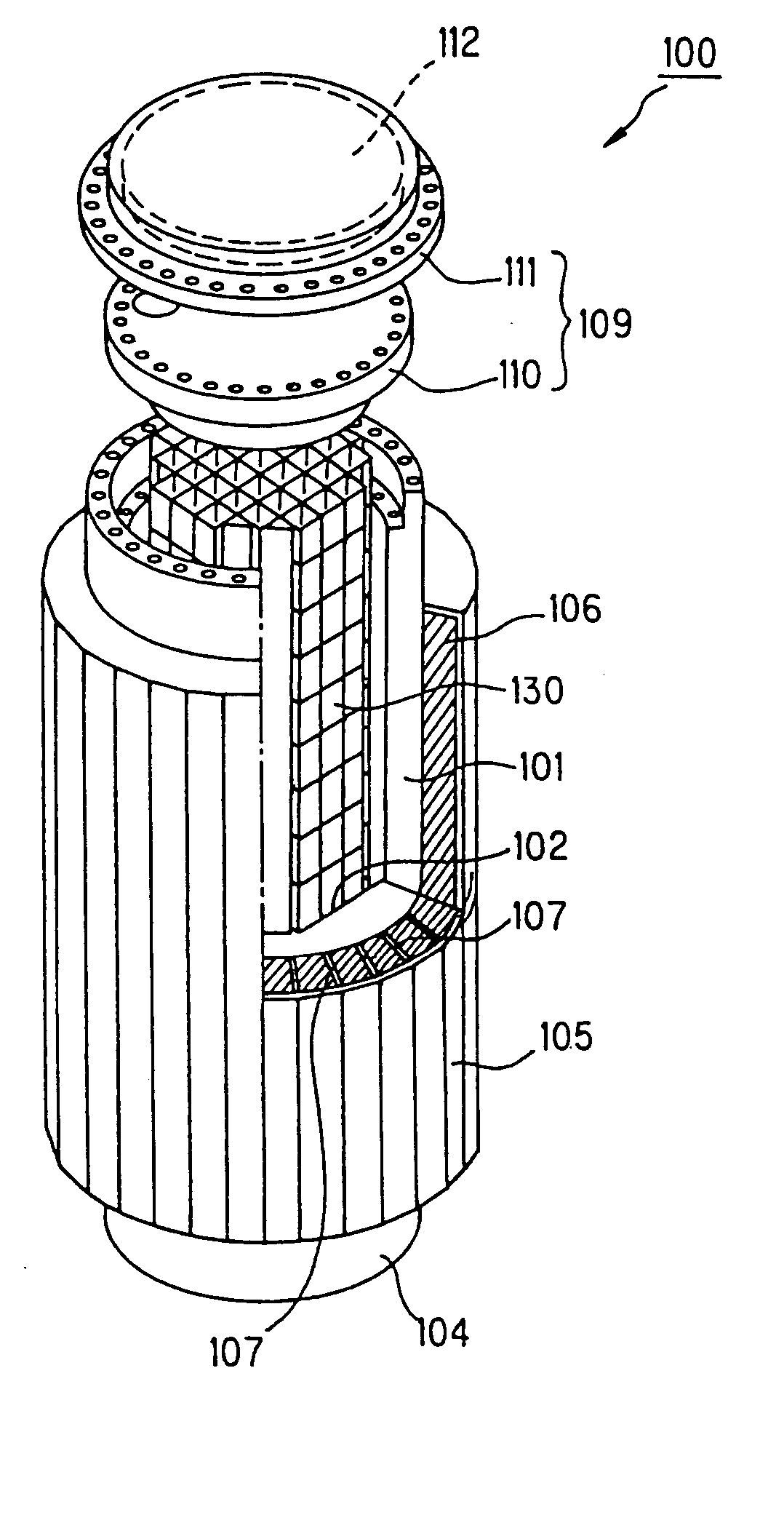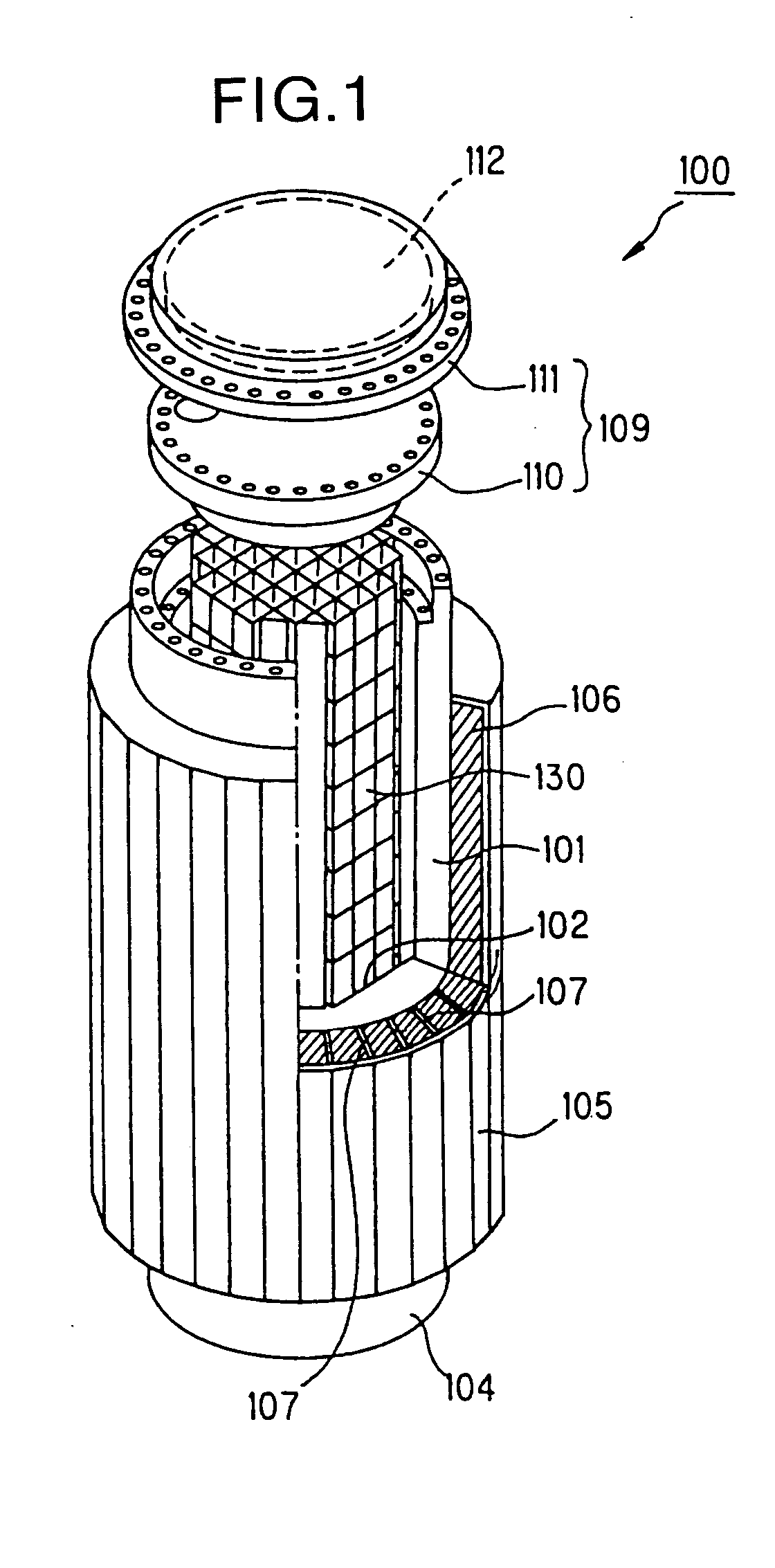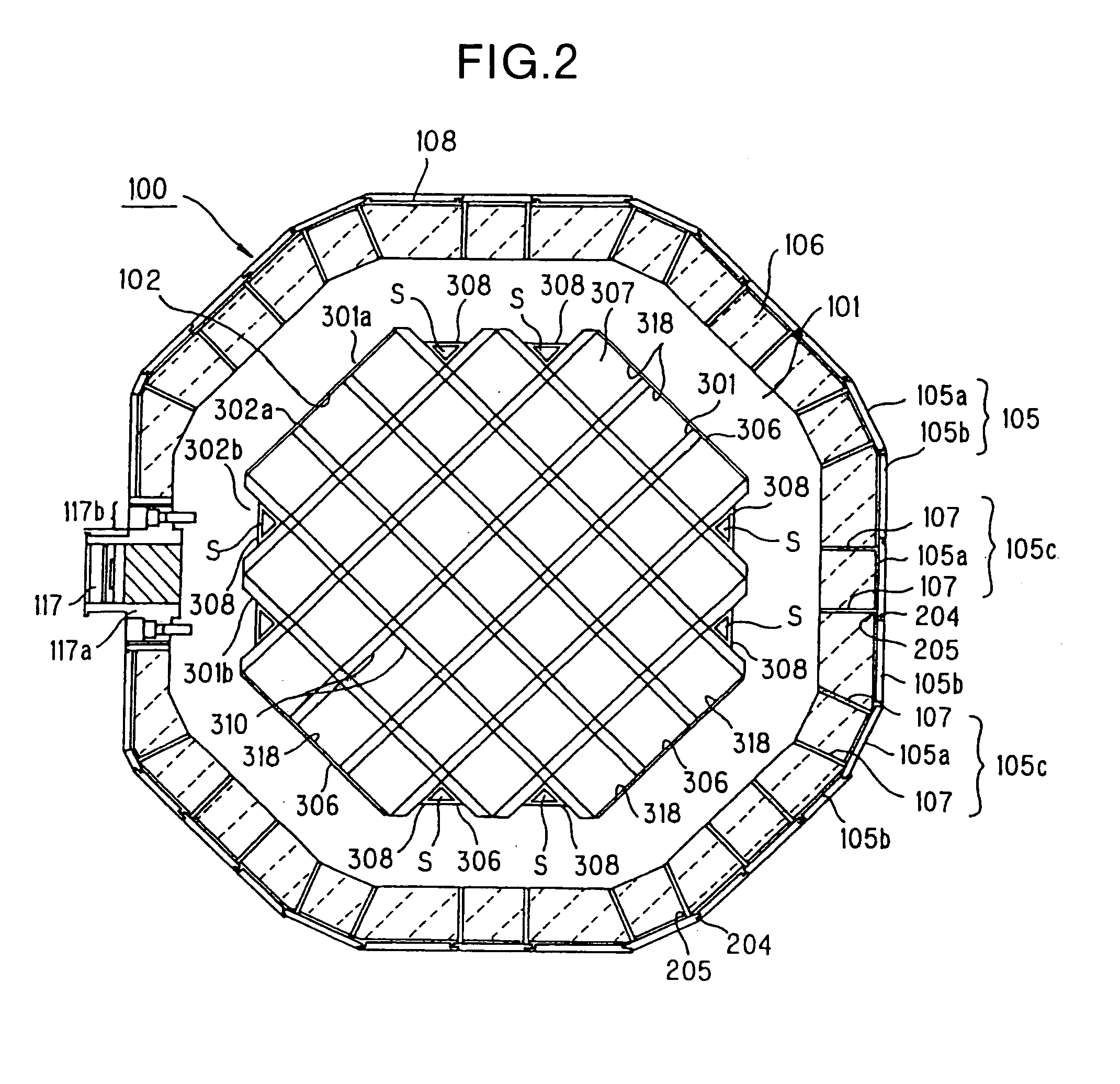Cask and method of manufacturing the cask
a cask and casing technology, applied in the field of casks, can solve the problems of troublesome welding operation, difficult assembly of the cask, and difficulty in manual welding, so as to improve the thermal conductivity, and provide the strength of the sheet members
- Summary
- Abstract
- Description
- Claims
- Application Information
AI Technical Summary
Benefits of technology
Problems solved by technology
Method used
Image
Examples
first embodiment
[0109]FIG. 1 is a perspective view which shows a cask according to the first embodiment of this invention. FIG. 2 is a cross-sectional view of the cask shown in FIG. 1 in its radial direction. A cask 100 according to this first embodiment is machined so as to have the internal surface of a cavity 102 of a body 101 matched with an external peripheral shape of a basket 130. The internal surface of the cavity 102 is machined by milling with an exclusive machining apparatus to be described later. The body 101 and a bottom plate 104 are forged using carbon steel having a gamma-ray shielding function. It is possible to use stainless steel instead of carbon steel. The body 101 and the bottom plate 104 are connected together by welding. In order to secure sealing performance of a pressure-resistant vessel, a metallic gasket is provided between a primary lid 110 and the body 101.
[0110] A resin 106 that is a polymer material containing much hydrogen and has a neutron shielding function is fi...
second embodiment
[0142]FIG. 15 is an explanatory view of a cask according to the second embodiment of this invention. This cask is characterized in that an external cylinder 216 has an angular shape in its cross section. Heat conductive fins 107 are welded to both edges of a belt-like member 216a that is formed in an angular shape by bending (welded joints 205), thereby to form a unit. These units are welded onto bulge portions 201 of the body 101 (welded joints 206). Further, belt-like member 216b is formed by bending in the similar manner. The stage section 203 of the belt-like member 216b is engaged with the stage section 202 of the belt-like member 216a and is welded from the outside (welded joints 204). Honeycomb members are provided on the internal surfaces of the belt-like members 216a and b. A resin that absorbs neutron is filled in spaces formed with the belt-like members 216a or 216b and the heat conductive fins 107.
[0143] In the above structure, it is possible to carry out the entire wel...
third embodiment
[0145]FIG. 17 is an explanatory view which shows a cask according to the third embodiment of this invention. An external cylinder 220 of this cask is characterized in that a unit 220a having a T shape in its cross section is prepared by welding (welded joints 222) the heat conductive fin 107 at the center of a belt-like member 105a. The welding procedure is approximately similar to that of the first embodiment. First, the heat conductive fin 107 is welded to the belt-like member 105a to provide the unit 220a. The welding of the heat conductive fin 107 and the belt-like member 105a may be carried out from one side, or may be carried out from both sides in order to secure strength (welded joints 222). Next, these units 220a are welded to the body 101 at predetermined intervals. The body 101 is provided with a bulge portion 201, and the heat conductive fin 107 is welded on the bulge portion 201. Further, the welding is carried out from both sides of the heat conductive fin 107 in order...
PUM
 Login to View More
Login to View More Abstract
Description
Claims
Application Information
 Login to View More
Login to View More - R&D
- Intellectual Property
- Life Sciences
- Materials
- Tech Scout
- Unparalleled Data Quality
- Higher Quality Content
- 60% Fewer Hallucinations
Browse by: Latest US Patents, China's latest patents, Technical Efficacy Thesaurus, Application Domain, Technology Topic, Popular Technical Reports.
© 2025 PatSnap. All rights reserved.Legal|Privacy policy|Modern Slavery Act Transparency Statement|Sitemap|About US| Contact US: help@patsnap.com



